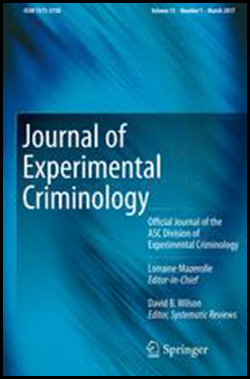
Objectives
The objectives of this research were to test the impacts of three shift lengths (8-, 10-, and 12-hour) on performance, health, safety, quality of life, sleep, fatigue, alertness, off-duty employment, and overtime among police.
Methods
This study consisted of a randomized block experimental design. There were 275 participating officers from two large police departments. Data were collected as part of a multi-site clinical trial for which we employed the same protocols in both sites. The blocks included site and time of day of the shift. Unique measures of work performance, safety, and fatigue were collected using laboratory-based simulations collected during the end of the shifts, and self-report instruments were used to capture other outcomes such as health and quality of life. The analysis model we employed was a block randomized ANCOVA in which the pre-test dependent measures served as the covariate. Results The results indicated that those working 10-hour shifts had a significantly higher quality of work life (f = .16) and averaged significantly more sleep (f = .19) than those on 8-hour shifts. Furthermore, those working 8-hour shifts averaged significantly more overtime (f = .42) than did those assigned to 10- and 12-hour shifts. In addition, officers working 12-hour shifts experienced greater levels of sleepiness (f = .20) and reported lower levels of alertness (f = .21) at work than officers on 8-hour shifts. Conclusions There do not appear to be any significant health, safety, or performance problems associated with compressed work week schedules in policing. Indeed, the implementation of 10-hour shifts may be a viable alternative to traditional 8-hour schedules considering the findings of this study. It is important to note that the benefits associated with 10-hour shifts did not inure to the 12-hour shifts. Although our study did not reveal any significant effects associated with objective measures of fatigue across shifts, the implementation of 12-hour shifts should be done only after careful consideration of some of the potential concerns. Limitations of this study include lack of information regarding the methods and costs associated with implementation of compressed schedules, and the low level of reliability for driving and shooting simulation exercises. Future research should examine the impact of overtime hours on fatigue, safety, and performance, and ways to more effectively regulate hours of work in policing.
